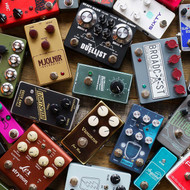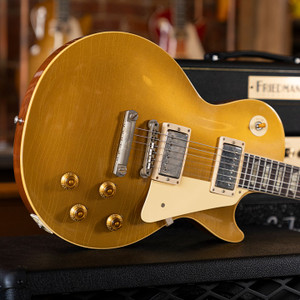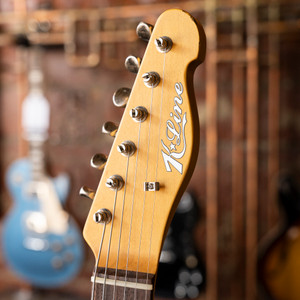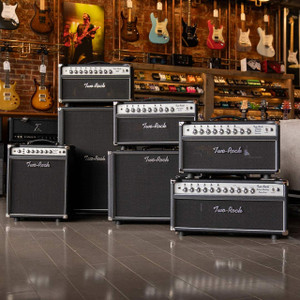From Fuzz to Delay: How Guitar Pedals Affect Your Tone
May 22nd 2025
Let’s get real for a sec - guitar pedals are a total rabbit hole, and we wouldn’t have it any other way.
One minute you’re just trying to dial in a little overdrive, and the next thing you know, your pedalboard looks like the cockpit of a spaceship. Fuzz, delay, reverb, modulation, weird synthy stuff that sounds like aliens are landing - it’s all part of the adventure.
But here’s the big question: how do all these guitar pedals actually affect your tone? And where do you even start?
Let’s break it down pedal-by-pedal, tell a few war stories, and help you figure out which boxes might belong in your chain.
Fuzz: The Wild One
Let’s start with the troublemaker - fuzz. This ain’t your smooth overdrive. Fuzz is raw, woolly, unpredictable, and glorious.
Plug into something like a Big Muff or a Fuzz Face, and your clean tone turns into a wall of angry bees trying to escape a tube amp. It’s compressed, it’s nasty, and that’s why Hendrix, Smashing Pumpkins, and QOTSA all sound like they do.
Tone tip: Fuzz pedals are super sensitive to your guitar’s volume knob. Roll back a little, and they clean up like magic. Crank it, and boom - instant sonic chaos.
Overdrive & Distortion: Your Foundation
Every pedalboard has at least one of these. Overdrive is like your amp breaking up just right. Think Stevie Ray Vaughan or John Mayer’s creamy blues tones. Distortion is the heavier, grittier cousin - think 80s rock, Metallica riffs, and face-melting solos.
A good overdrive pedal (like a Tube Screamer or Klon-style circuit) can add warmth, boost your solos, or just push your amp into that delicious sweet spot.
Pro move: Stack overdrives! Run one into another and shape your gain stages like a pro.
Modulation: The Secret Sauce
This is where things get weird - and wonderful. Modulation pedals include chorus, phaser, flanger, tremolo, and vibrato. They mess with your signal in time and pitch, creating movement and texture.
Want your tone to shimmer like '80s clean guitar? Grab a chorus pedal. Want to sound like Van Halen on “Ain’t Talkin’ ’bout Love”? Phaser, baby. Looking to make your Strat sound like it’s underwater on a vinyl record from the future? Flanger's your guy.
These aren’t always “on,” but when used tastefully, modulation pedals can turn a good tone into a “wait - what was that?!” kind of moment.
Delay: The Space Creator
Now we’re talking delay - one of the most fun and useful guitar pedals out there. It repeats your signal after a set amount of time, creating everything from slapback echo to cascading ambient soundscapes.
- Want a rockabilly slap? Set your delay to one quick repeat.
- Playing U2 covers? Crank the feedback and dial in dotted eighths.
- Building an ambient loopscape in your bedroom? Crank the delay, add reverb, and float away.
Analog delay (like the classic Carbon Copy) is warm and dirty. Digital delay (like the Strymon Timeline or Boss DD-500) is pristine and programmable. Both rule in their own way.
Reverb: The Finishing Touch
Ever played guitar in a bathroom? That’s reverb. But, you know… more musical.
Reverb pedals simulate different spaces - rooms, halls, cathedrals, caves, interstellar wormholes (shoutout to the EarthQuaker Devices Afterneath). A little reverb adds depth to your tone. A lot turns your guitar into a cinematic soundtrack.
Just don’t go full surf rock unless that’s what you’re going for. Then go nuts.
The Pedalboard Journey: A Story We Know All Too Well
We had a customer in Charlotte not long ago - came in with a Telecaster, a clean amp, and a single overdrive. Great tone, but he was craving something more “vibey.”
Three hours later, he left with a delay, reverb, and a phaser. Came back two weeks after that with stars in his eyes and said, “I played for five hours last night and didn’t realize it. I think I saw God in the modulated feedback trail.”
That’s the beauty of guitar pedals & effects - they inspire. They make you want to play.
A Word on Signal Chain (Don't Panic)
Here’s the most basic layout if you’re just starting out:
- Tuner (seriously—don’t skip this)
- Fuzz/Overdrive/Distortion
- Modulation (chorus, phaser, etc.)
- Delay
- Reverb
Stick to that order to start. You can always go full mad scientist later and put your tremolo before your drive or fuzz in a toaster's effects loop.
Come! Play With Us
If you're curious, we've got a whole wall of guitar pedals & effects here at Midwood Guitar Studio in Charlotte, and we encourage serious testing. Grab a guitar, sit down with a cup of coffee, and start stomping. We’ll set you up with anything from vintage-inspired fuzz to space-age delay machines.
Whether you're building your first board or fine-tuning your 12th, we’re here to help. And we promise not to judge how many power supplies you're using.
Final Thoughts: It’s Your Sound - Go Make It Weird
At the end of the day, guitar pedals are about exploration. They help you shape your voice. They turn basic chords into textured worlds. And sometimes, they even inspire your next song.
So don’t be afraid to experiment. Try something new. Add that extra pedal you swore you didn’t need. (You did.)
And if you’re ever in the neighborhood, swing by one of the friendliest Charlotte guitar stores around. Whether you’re chasing tone, looking for expert guitar repair, or just want to plug in and play, we’ve got you covered. Come crank up and chase the sound that makes you grin like a kid.






